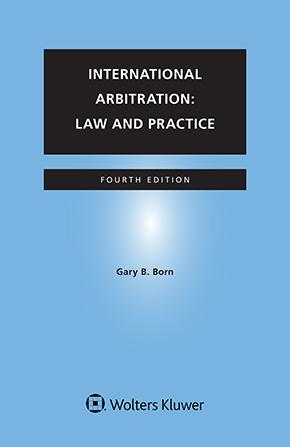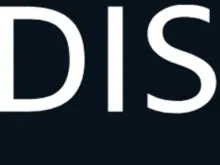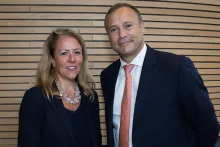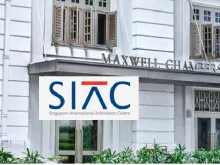Global Perspectives on Teaching International Investment Arbitration: The Challenges of Teaching in a Comparative and Interdisciplinary Context in Hong Kong
August 15, 2025
When I first proposed a new course, “International Economic Dispute Resolution: Law and Politics”, for the LLM in International Economic Law stream at the City University of Hong Kong, I was excited about its potential to offer something fresh and meaningful, though I knew it would come with its own set of challenges. Looking back, it has become one of my proudest teaching contributions – a challenging beginning that blossomed into a rewarding and intellectually vibrant experience.
What differentiates this course from traditional international economic law courses is two key features. First, instead of narrowing in on a single legal regime, the course takes a broad, comparative approach that guides students through the dispute settlement mechanisms of international trade, investment, taxation, and even emerging fields like digital trade. Second, it breaks disciplinary boundaries by weaving in international relations theories and encouraging students to critically engage with pressing international economic law issues through a wider, interdisciplinary lens. In this post, I will explain the motivations for starting this course, the curriculum design, the challenges of developing the course, and the unique experience of teaching in Hong Kong.
Why Start this Course?
As a researcher of international investment law, what I find most compelling about the regime is its dynamic nature. It is controversial, fragmented, and constantly evolving, shaped by waves of criticism and reform efforts. In this process of evolution, it draws lessons from other legal regimes, such as commercial arbitration and the World Trade Organization (“WTO”), and in turn, sheds light on the debate on the development of other dispute settlement mechanisms like the settlement of tax disputes. Therefore, I believe that, to fully understand the dilemma of the reform of international investment dispute settlement, it is important to situate it within the broader landscape of international adjudication and global politics. This requires us to broaden the scope of research and understand how international courts and tribunals have shaped, or may potentially shape, the evolution of international norms. It also requires us to treat the legal regime not just as a system of legal rules and principles, but as an institution embedded in a complex web of political and economic interests, ideologies, and normative struggles. In this respect, international relations theories offer valuable insights.
Such an understanding of international investment law inspired me to design a course that connects different dispute settlement mechanisms under the broader theme of international economic dispute settlement. I expect the comparative and interdisciplinary perspectives to help students think critically about international economic dispute settlement, to explore both the common threads and the divergent features across regimes, and to engage with new ideas about how these systems might evolve.
The Design of the Course
Each class starts with a two-hour lecture, followed by one-hour student group presentations and in-class discussions. While lecturing is often criticized as being passive or disengaging, I found it highly important for a course that spans a wide range of topics and complex legal frameworks. A well-structured lecture can provide students with the foundational concepts and principles, which creates a common ground for their critical discussions.
The syllabus consists of three parts. The first part is introduction and foundations, which introduces basic concepts and theories of international adjudication, such as state consent, jurisdiction, different means of dispute settlement, relevant theories, etc. The second part takes a closer look at dispute settlement in various fields of international economic law (i.e. trade, investment, tax, and digital trade). The last part involves advanced issues of international economic dispute settlement, including sustainability, alternative dispute settlement, and enforcement. For group presentations, I designed ten questions that are topical and controversial.
Rules and principles of international investment arbitration play a significant role in all three parts. For example, in Part 1, when explaining basic concepts such as jurisdiction and attribution, I used Investor-State Dispute Settlement (“ISDS”) cases such as Mesa Power v Canada to demonstrate how they are interpreted and applied in practice. In Part 2, I dedicated two sessions (a total of six hours) to the investment dispute settlement mechanisms. I introduced the historical background of the regime, the sources of international investment law, key substantive obligations, the origin and evolution of ISDS, the jurisdiction of tribunals, conditions for arbitration, institutions and procedures, transparency and non-disputing party participation rules, and remedies. Students were then invited to engage in group presentations on two hotly debated topics: whether an appellate mechanism should replace the existing ISDS system, and what China’s approach to ISDS reform should be. I was pleased to see the students incorporating comparative perspectives and economic and political considerations in their discussions by actively referring to the experience of the WTO Appellate Body and China’s Belt and Road Initiative.
In Part 3, we explored investment arbitration in a broader context by comparing its dispute prevention and enforcement mechanisms to those in trade and tax dispute settlement mechanisms. Students were encouraged to debate on topics such as whether it is desirable to make dispute prevention and alternative dispute resolution mechanisms compulsory, and how to ensure effective enforcement of international adjudicative decisions. Furthermore, in the session on sustainability, I introduced high-profile ISDS cases such as Rockhopper v Italy and the Spanish renewable energy cases (e.g., PV Investors v Spain) to invite students to critically reflect on the complex intersections between investment protection obligations and energy transition efforts.
The Challenges
One of the main challenges in designing the course was deciding how to structure the second part, which introduces four distinct dispute settlement regimes in greater detail. With only one or two lectures allocated to each, it was not feasible to cover all procedural rules comprehensively. Many students also entered the course with a limited background in international economic law, making it essential to first introduce key substantive rules to help them develop a coherent understanding of each regime. This required careful selection of legal issues to be covered and presenting the concepts in accessible terms with the support of videos, case summaries, and practical examples. Due to time limitations, I cannot introduce many cases in detail in each lecture. But this problem is mitigated by the third part of the course, where I can introduce more cases under themes such as sustainability and enforcement of the adjudicative decisions.
In addition, I aimed to maintain a sense of continuity across the lectures on different regimes, so that students would not feel overwhelmed when shifting their focus from one regime to another. To achieve this, I followed a consistent structure for each regime: beginning with its historical background and overarching goals, then introducing key substantive principles, and finally turning to the dispute settlement framework, including jurisdictional issues, relevant institutions and procedures, practice on transparency and third-party participation. In the last session of each class, students address more advanced topics such as institutional reform.
Another challenge arises from encouraging students’ engagement with international relations theories. In the first part of the course, I explained to them various influential theoretical approaches to international dispute settlement, such as realism, institutionalism, constructivism, and critical theories. I encouraged the students to read more about one or several theories and apply them to analysing the group discussion questions. However, some students seemed intimidated by the theoretical discussion and lacked confidence in applying it to concrete problems, and some referred superficially to some theories without demonstrating a true understanding of their core assumptions. I should not be surprised – engaging in theoretical analysis requires both a solid grasp of the subject matter and the ability to distill the key concepts into a conceptual framework that reveals broader implications. Many students are still in the process of developing this kind of knowledge and analytical capacity. During their presentations, I endeavoured to ask them questions in an encouraging way to push them to dig deeper into the fundamentals of the problem addressed. Another measure I plan to take in the future is to suggest more readings that explain the theories in a more accessible way.
Teaching in Hong Kong
Most of my students are from mainland China, many of whom are LLM students who completed their legal studies there before joining the City University of Hong Kong. There are also exchange students and JD students. As a Chinese myself, I was prepared to face a shy group of students for the first class. And just as I expected, only a handful among the 150 students interacted actively with me. But this initial quietness did not mean they were not engaged; many were taking notes attentively and approached me with thoughtful questions during session breaks. One technique I have found particularly helpful in encouraging interaction is the use of online polling and word cloud tools to ask them about their thoughts on specific issues. Since these tools are anonymous, the participation rates are usually quite high.
It is also interesting to observe how the students’ educational background influences their approaches to international law issues. Studying civil law during their LLB degrees, many of them believe a higher level of certainty in international dispute settlement is more desirable. Therefore, on the issue of the reform of the ISDS mechanism, for example, many prefer the establishment of an appellate mechanism.
I also encountered a common challenge facing many law tutors today – the concerning trend of using artificial intelligence (“AI”) in student assignments. It is often not hard to tell. In presentations, some students cover a surprisingly broad range of issues with a high level of abstraction that feels detached from real engagement. When asked to explain the concepts during Q&A, some struggle to articulate what they actually mean. Of course, we cannot, and should not, outright prohibit AI in learning. Used properly, it can help students grasp the knowledge framework more quickly. But it becomes problematic when AI is doing the work in lieu of them. It is interesting to observe that, at least so far, AI is still performing poorly at applying international relations theories to problems. So in future assessments, I plan to increase the weight given to theoretical analysis, both in group presentations and Q&A sessions. This will hopefully encourage students to reflect more deeply and rely less on shortcuts.
Conclusion
Overall, I truly enjoyed teaching international investment law in such a comparative and interdisciplinary context. I feel lucky to have the opportunity to bring my research perspectives into the classroom, and the journey has proved inspiring. It is not always easy to encourage students to step out of their comfort zones and get creative and critical by engaging in inter-regime and interdisciplinary discussions. Nevertheless, it is something that must be done – in an era where AI can accurately summarize most legal rules, such abilities are exactly what showcase the irreplaceable value of human intelligence.
You may also like












Gary L. Benton
Thank you Professor Yu for sharing your thoughts and inspiration. City U has a long history of excellence in the international arbitration field and your students are fortunate to have such a dedicated and caring educator.